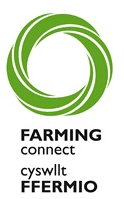Dairy farmers rate peer-to-peer learning as one of the most valuable routes to tackling lameness in their herds, an important new study in Wales involving more than 5,400 cows has found.
The research was undertaken as a European Innovation Partnership (EIP) Wales project to shed light on how Welsh dairy farmers could improve on their lameness record because, despite a significant emphasis on reducing incidence over the last 20 years, there is no evidence that the situation improving.
The EIP project was led by vet Sara Pedersen, of Farm Dynamics Ltd, and focussed on a range of practical interventions on 24 dairy farms including Farmer Led Action Groups (FLAGs), a peer-to-peer approach based on a system developed in Scandinavia.
After the study concluded, it was FLAG that farmers rated as the intervention option they were mostly likely to continue in the longer term.
However, another intervention- targeted one-to-one veterinary advice on implementing the AHDB Healthy Feet Lite (HFLite) programme – also resulted in reductions in the prevalence of lameness.
The average reduction for farms that engaged in the HFLite, FLAG or a combination of both was nearly 10% compared to a minor improvement of 1% in the control group of farms who received no intervention.
FLAGs were so popular with farmers that both EIP FLAGs will continue with this work under the auspices of Agrisgôp, Farming Connect’s fully-funded management development programme, with the groups facilitated by Ms Pedersen.
Agrisgôp encourages eligible farmers and foresters to get together to not only develop their businesses, but to personally gain confidence and skills through action learning.
In a FLAG, farmers don’t receive specialist advice – instead there is peer-to-peer learning with farmers sharing knowledge and ideas through meetings on their own farms.
Ms Pedersen said this puts farmers in charge of the process – setting the agenda, choosing the problems and identifying the solutions.
The facilitator doesn’t take on the role of advisor, focussing instead on ensuring the meetings are well-organised, disciplined, well-documented and running to time.
“The facilitator prompts questions and maintains meeting momentum but doesn’t provide any technical input during discussions,” Ms Pedersen explained.
In the groups, lameness prevalence in each herd was benchmarked together with incidence of lesions recorded in foot trimming records.
Overall farmers rated the FLAGs as more valuable than the HFLite and were more likely to continue with these after the project concluded as receiving advice that was practical and directly related to their own farm situation was highlighted as very important, said Ms Pedersen.
“However, the HFLite action plan often laid the foundation for some of the discussions in the FLAG meetings so there was real value in having both alongside one another,” she added.
On average, farmers scored the value of the advice received through FLAGs as 8.5 out of 10, compared to 7.8 for HFLite.
“They stated that the most valuable aspect was visiting other farms, the frequency of the meetings meant they were constantly focusing on lameness and the incorporation of lesion data for benchmarking,” said Ms Pedersen.
All farmers said they were “highly likely” or “extremely likely” to continue with attending a FLAG in future.
It also emerged that the biggest positive influence on the ability of farmers to manage lameness was use of a highly skilled foot trimmer; many of the farms that saw the largest decreases in lameness changed foot trimmers as a result of advice received from their peers.
On the flipside, bovine TB restrictions were identified as having the greatest negative influence because of constraints around culling older cows and fewer numbers of replacements entering the herd.
At the start of the study, farmers had described feeling ‘anxious,’ ‘concerned’ or ‘overwhelmed’ by lameness but at its conclusion those descriptions had shifted to ’empowered,’ ‘comfortable’ and ‘positive.’
Help keep news FREE for our readers
Supporting your local community newspaper/online news outlet is crucial now more than ever. If you believe in independent journalism, then consider making a valuable contribution by making a one-time or monthly donation. We operate in rural areas where providing unbiased news can be challenging. Read More About Supporting The West Wales Chronicle

























